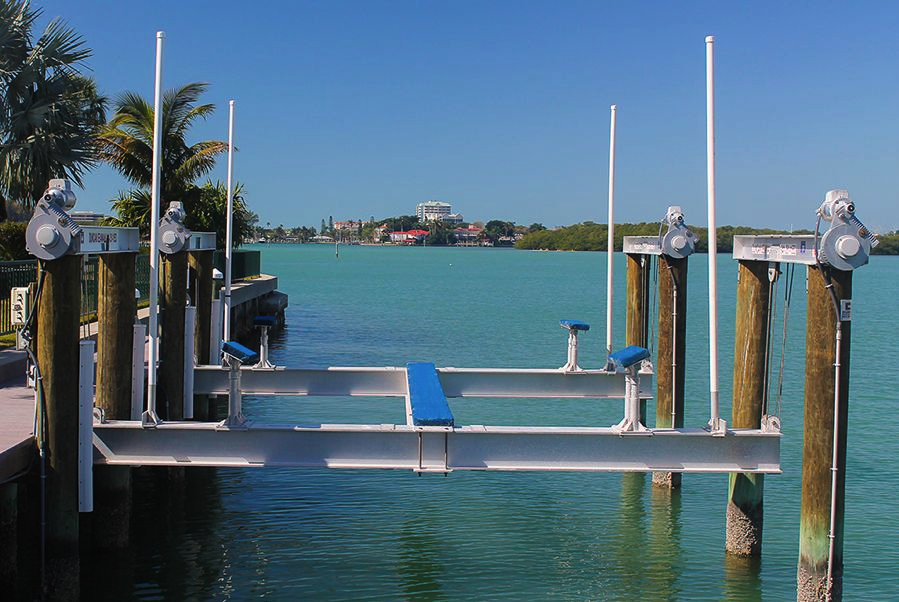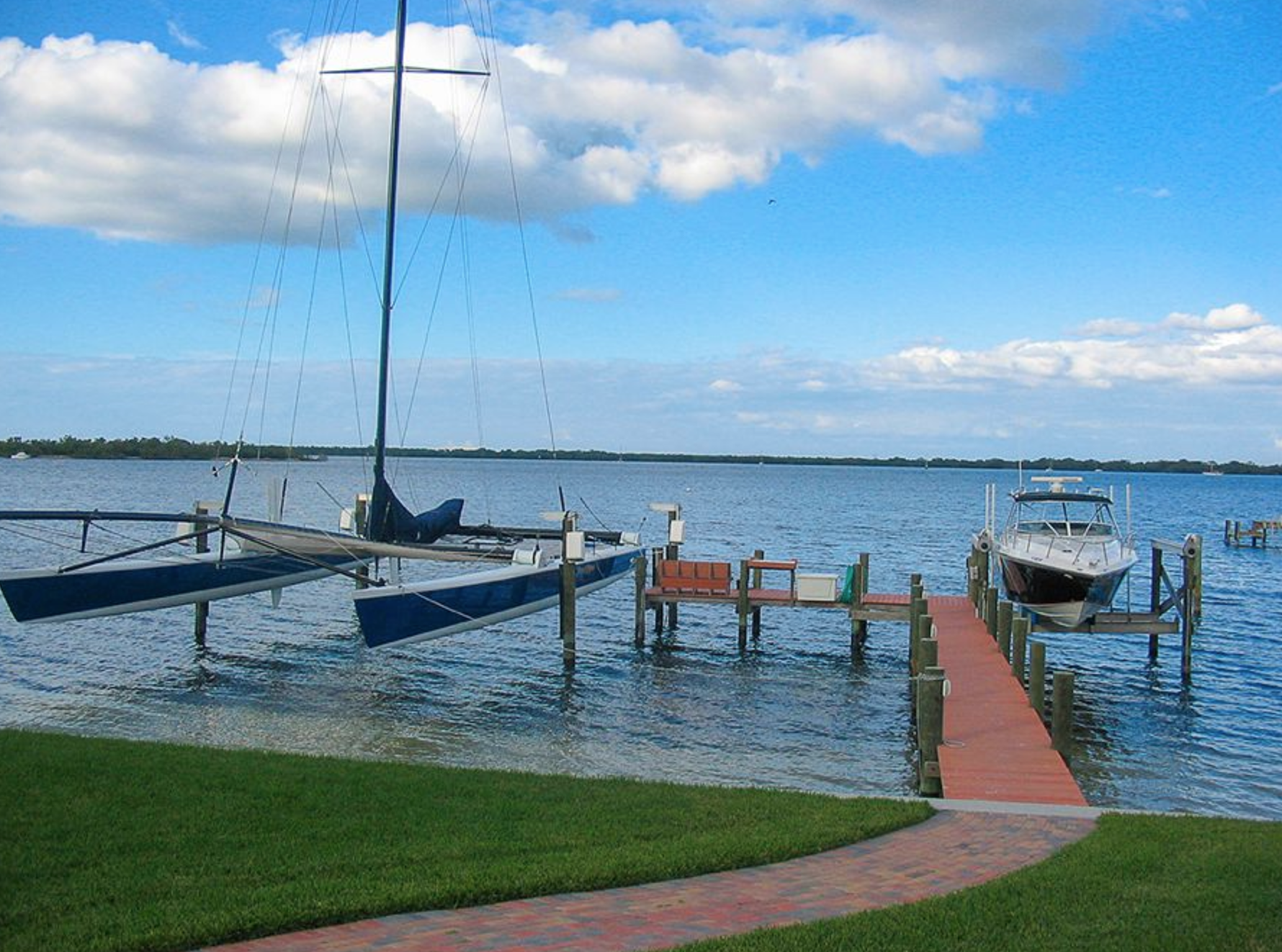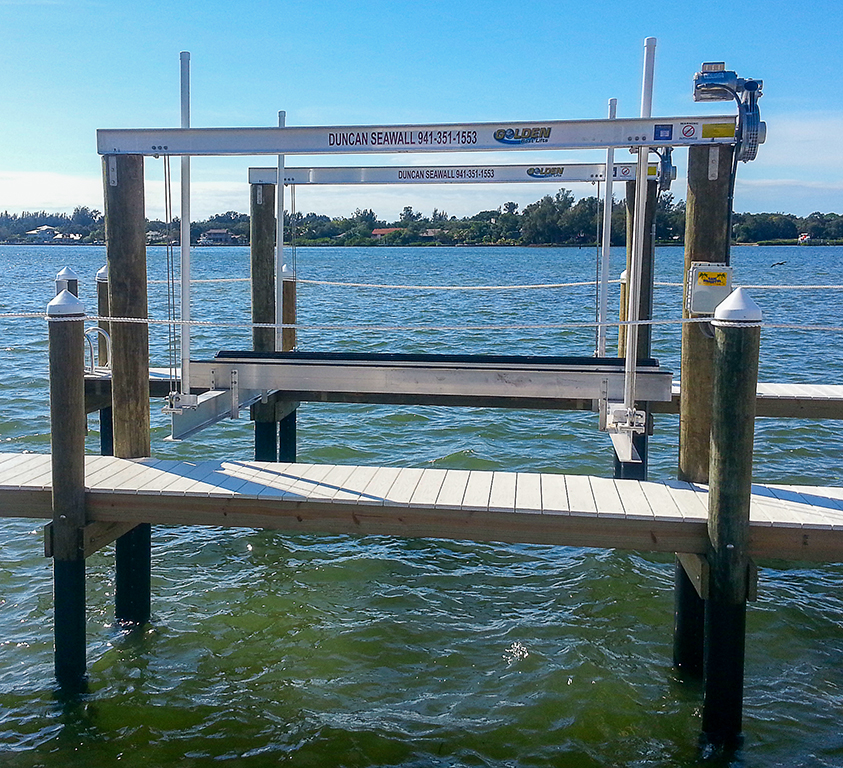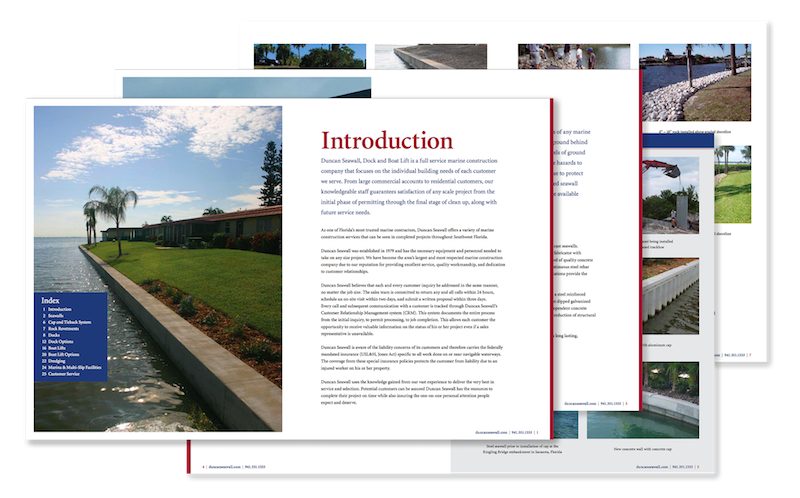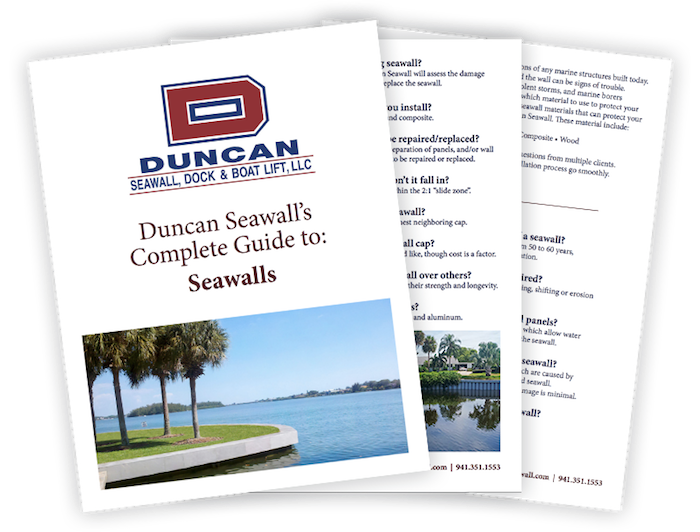As a waterfront property owner, protecting your valuable possessions from damage is paramount, and that is where a boat lift comes in handy. Besides caring for your boats and other watercraft, it’s crucial to maintain your boat lift and know when to repair or replace parts. Here are some of the signs that indicate that your boat lift is ready for repairs or replacement.
Related Blog: Golden Boat Lifts: Top 10 Maintenance Tips
How Long Should a Boat Lift Last?
Boat lift longevity depends equally on its build quality, use conditions, and environmental factors. As tranquil as the Southwest Florida waters can be, the majority of the elements affecting marine structure lifespan still apply. Some factors, such as algae and other growths, may even be greater, due to stiller waters compared to the eastern coast.
With constant exposure to salt and regular operating conditions, even top-quality boat lifts have a maximum expected lifespan of 15–25 years. With good boat lift maintenance, some boat owners managed to squeeze in several more years of reliable performance, but this is more the exception than the rule.
Signs Your Boat Lift Needs Servicing
It's likely that if you've invested in a boat lift, you're also ready to invest in its proper upkeep. Still, parts break over time. With serious enough or repeated equipment malfunction, the question becomes whether repair or replacement is in order. Below are the most common boat lift malfunctions, including when a full replacement may be necessary.
Malfunctioning Controls
The controls encompass all switches, harnesses, and other components that lift and lower the boat. Over time, circuit contacts can become rusty, especially if exposed. Other electrical faults may occur due to overheating components and other electromechanical stressors. This can cause damage to the lifting mechanisms, and even your boat.
Depending on your boat lift, the damage could be limited to a few components or extensive enough to require a full rewiring and/or reinstallation of the controls. In the latter case, the cost of repairs could approach that of a new lift. If you notice the lift raises the boat too high or that the controls function intermittently, have it inspected and serviced immediately.
Rust
Rust can accumulate quickly on boat lifts even made of steel. Structural steel will corrode in salt water (and up to five times faster than in freshwater).
If your boat lift shows only minor signs of rust, it's possible to grind it away and apply a protective sealant. When the time comes for replacement, remember that even the most corrosion-resistant steel alloys are usually inferior to structural aluminum boat lifts in terms of corrosion resistance.
Worn Out Cables
First and foremost, cables are the lifeblood of any boat lift because they lift the rack assembly and bear the entire weight of your watercraft. Since boat lifts have galvanized steel or stainless steel cables, they are prone to rust, and faulty drum winding, overloading, misalignment, and inadequate tension can cause the cables to wear out as well.
Following a regular boat lift maintenance checklist is the surest way to spot any of these issues to begin with. Catch them early enough, and you'll prevent the posts, beams, and other structural elements from bearing the boat's weight unevenly. Even the most innocuous cable malfunctions could lead to more extensive damage, especially over time.
Faulty Motor
Except for simple fuse blowouts, motor defects can lead to more costly repairs. Depending on the age of your boat lift, it can be hard to decide if it's a sign to repair or replace the entire lift. Assuming the rest of the boat lift is in good shape for its age, there's usually little reason you can't replace the motor, even if it can't be repaired.
Sinking Piles
The boat lift can only operate properly from an even, stable surface. If the piling shifts, the boat's weight becomes unevenly distributed, causing greater stress on certain posts than the others. A post can then bind, rendering it inoperable.
Boat lift cables and other load-bearing systems also depend on even distribution of weight. Malfunctions related to lopsided boat lifts can damage the entire system, leading to more costly repairs that may exceed the cost of a new lift.
What To Do if Your Boat Lift Malfunctions?
The best thing to do in any of the above scenarios is to ensure your watercraft is not in a dangerous position, then refrain from using the boat lift until it's serviced by an experienced marine construction specialist.
If your boat lift undergoes any malfunction, or if you see signs of rust and other potential issues, don't chance it: contact Duncan Seawall Dock & Boat Lift and request a timely boat lift service call.



